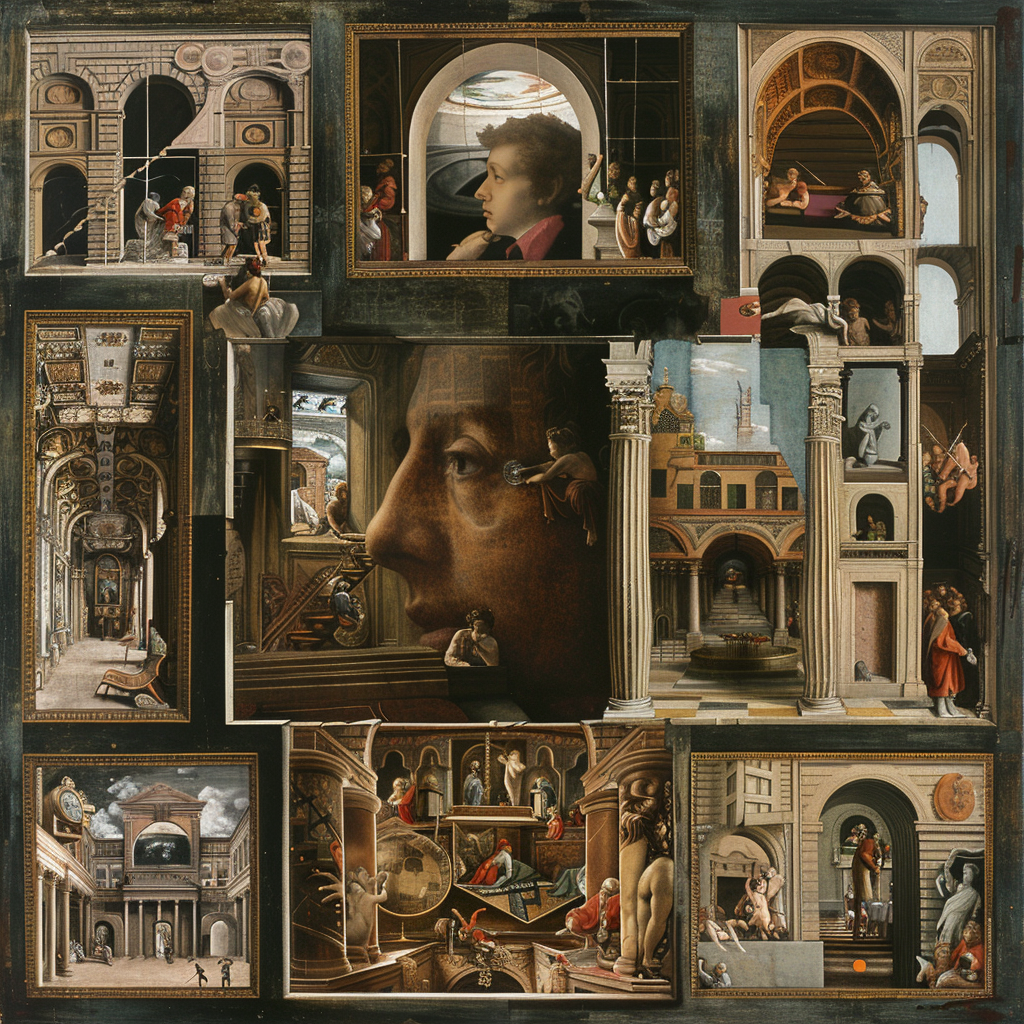A work of art is composed of compositional elements such as point, line, surface, form, and color, and compositional principles such as unity, balance, and proportion, which have a visual and psychological effect on the viewer. Unity is divided visually and intellectually, and is achieved by methods such as adjacency, repetition, and continuity.
A work of art contains a combination of sculptural elements such as points, lines, planes, shapes, and colors, and sculptural principles such as unity, balance, and proportion. These can affect the viewer not only visually, but also psychologically. Unity, one of the compositional principles of painting, is the principle of creating order by giving consistency to the different compositional elements on the canvas.
Unity is one of the key principles that organizes a work of art, and it plays an important role in the understanding and appreciation of art. Not only in painting, but also in sculpture, architecture, design, and other artistic disciplines, unity contributes to the completeness of a work. It’s more than just visual harmony; it’s essential for clearly communicating the inner meaning and theme of a work. Unity creates a consistent impression on the viewer, which adds to the emotional impact of a work of art. For example, if you look at the work of famous artists, you’ll notice how they’ve implemented unity to create a single, coherent message throughout their work. This shows how unity plays an important role in a work of art.
Unity in painting can be divided into visual and intellectual. Visual unity refers to the unity that is achieved through similarities or regularities that exist between the elements of the composition that are visible to the eye. It is something that can be felt directly at the moment of viewing the work and is expressed by visual elements such as shapes and colors. Intellectual unity refers to the unity of meaning or concepts related to the subject matter. In other words, the unity of conceptual things that can be understood through thinking is related to the subject matter. Even if there is no visual unity, if a picture is completed with things related to a certain subject, it can be said to be intellectually unified. Therefore, if visual unity is the formal order of the elements, intellectual unity is the order of the content.

To realize unity, the following methods are commonly used: adjacency, repetition, and continuity. Adjacency is a method of placing separate elements close together to make them appear to have a relationship with each other. Finding constellations in the night sky is a matter of interpreting certain stars by neighboring them to give them meaning according to their shapes, and forming words by neighboring letters is also a matter of using the order of unity. Repetition is a way to give unity to a whole work by repeating parts of it. Repetition can be in the form of color, shape, texture, direction, angle, and more. Finally, continuation is a way to create unity by creating a connection from one object to another. When we see related things, our eyes naturally move from one thing to the next. Visually, it means that shapes or colors are related on the screen, and intellectually, it means that meanings or concepts related to a topic are connected and connected to each other. It is the continuous and organic arrangement of objects related to the theme that gives unity to the entire work.
To better understand unity, it’s helpful to analyze different works of art. For example, in Vincent van Gogh’s Starry Night, you can see how visual unity is achieved through the repetitive patterns of stars and swirling clouds in the night sky. Similarly, Picasso’s cubist works show a unique unity through repetition and variation of form and color. From this analysis, we can see that unity is not just a compositional principle, but an important tool for effectively communicating an artist’s intentions and emotions.
Unity is an important sculptural principle that embodies the theme in a work. The reason why it is important to appreciate a work of art based on the principle of unity in painting is that when the viewer appreciates a work of art based on the various compositional elements in the work and the consistent order in which they are organized, the viewer is able to understand the artist’s intended meaning of the work. Furthermore, unity enriches the experience of viewing an artwork and helps the viewer connect with it on a deeper level. For these reasons, unity is considered an essential element of any work of art.
 I’m a blog writer. I want to write articles that touch people’s hearts. I love Coca-Cola, coffee, reading and traveling. I hope you find happiness through my writing.
I’m a blog writer. I want to write articles that touch people’s hearts. I love Coca-Cola, coffee, reading and traveling. I hope you find happiness through my writing.